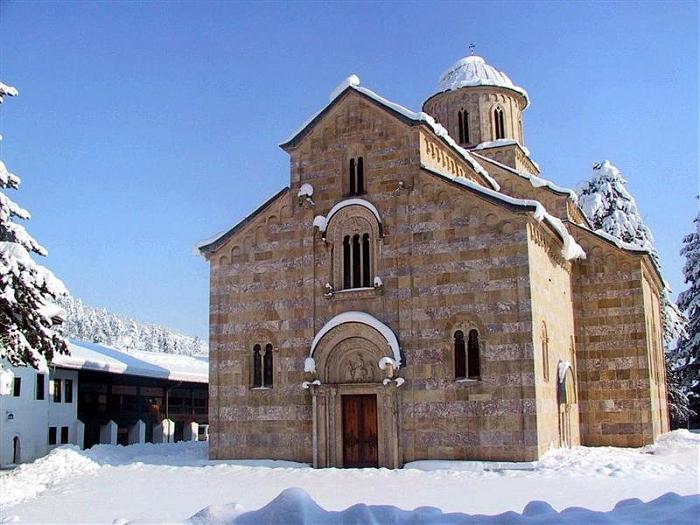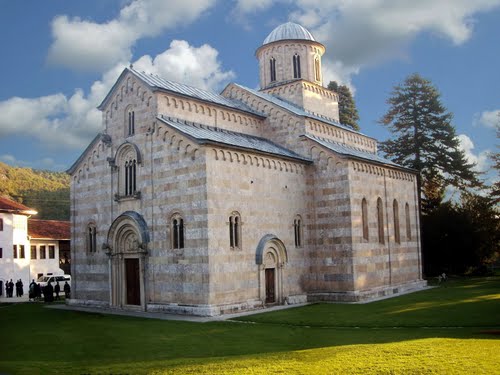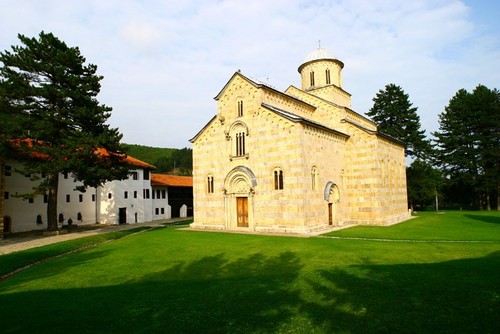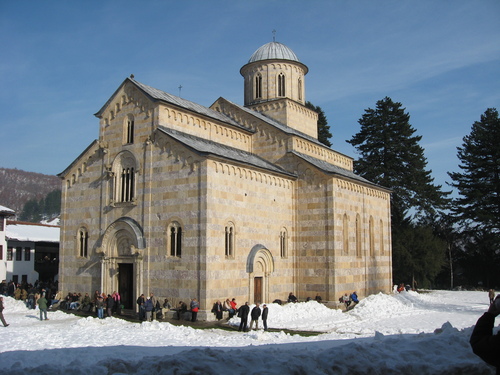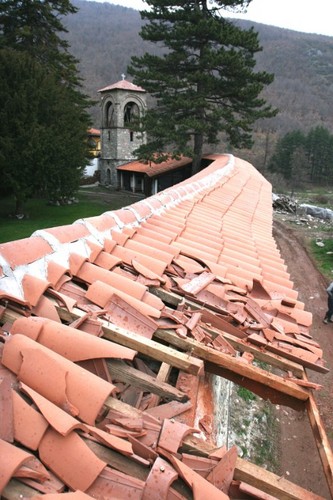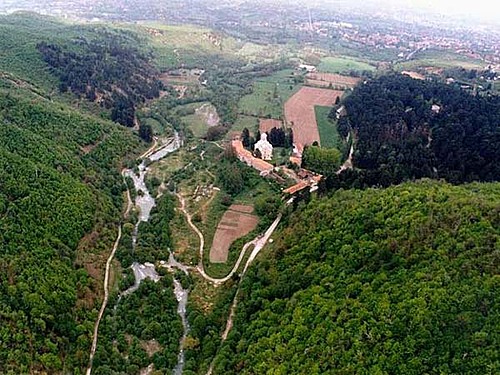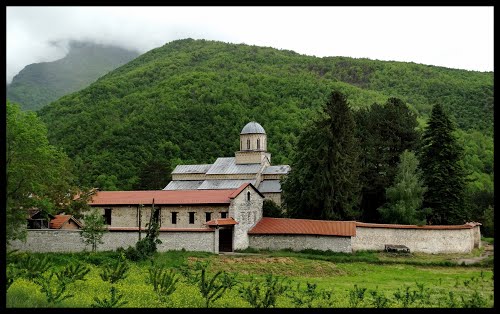Visoki Decani is a major Serbian Orthodox Christian monastery located in Decani, Kosovo.
History
The Visoki Decani monastery is located by the Decanska Bistrica river gorge at the foot of the Prokletije Mountains, in western Kosovo. It is located about 2 kilometres (1.2 mi) from the town of Decani. The monastery is owned by the Serbian Orthodox Church, Decani Monastery Administration; it is managed by the Eparchy of Raska and Prizren. The monastery has been under the legal protection of Serbia since 1947.
Construction
Construction began during the reign of Serbian King Stefan Uros III Decanski in 1327 and the original founding charter from 1330 has been preserved. Decanski's son, Stefan Dusan, seized the Serbian throne in 1331 and had his father strangled to death in the Zvecan Fortress shortly afterwards. Decanski was buried in the still incomplete Visoki Decani monastery in 1331 and its construction was continued by Dusan. The monastery's main architect was Fra Vita, a Franciscan monk from the Montenegrin coastal town of Kotor. Construction of the monastery lasted for a total of 8 years, and ended in 1335. The wooden throne of the hegumen was finished at around this time, and the church interior was decorated. Decanski's carved wooden sarcophagus was finished in 1340.
15th–19th century
Bulgarian writer Gregory Tsamblak, author of The Life of Stefan Decanski, was the head (hegoumenos) of the monastery at the beginning of the 15th century. The painter-monk Longin spent two decades in the monastery during the second half of the 16th century and created 15 icons with depictions of the Great Feast and hermits, as well as his most celebrated work, the icon of Stefan Uroš. In the late 17th century, the Turks plundered the monastery, but inflicted no serious damage.
20th and 21st century
During World War I, the monastery's treasures were plundered by the Austro-Hungarian Army, which occupied Serbia between 1915 and 1918. The monastery fell within the territory of the Italian-ruled Albanian Kingdom during World War II, and was targeted for destruction by the Albanian nationalist Balli Kombëtar and Italian fascist blackshirts in mid-1941. The Royal Italian Army responded by sending a group of soldiers to help protect the monastery from attack.
The monastic treasure was exhibited in the rebuilt medieval refectory in 1987. The monastery's monks sheltered refugees of all ethnicities during the Kosovo War, which lasted from March 1998 to June 1999. On 7 May 1998, the corpses of two elderly Albanians were found 400 metres (1,300 ft) from the monastery. They were reportedly killed by the Kosovo Liberation Army (KLA) for collaborating with Serb forces. The KLA staged an attack not far from the monastery on 8 May, killing one person and wounding four others. That evening, Decan's 300 remaining Serbs came to the monastery to seek shelter. The Albanian civilians seeking refuge in the monastery returned to their homes following the withdrawal of Serb military personnel from Kosovo in June 1999. An Italian unit of the Kosovo Force (KFOR) was subsequently assigned to guard the monastery, which was attacked on several occasions. Dozens of Romanis sought sanctuary in the monastery over the next several months, fearing retaliatory attacks by their Albanian neighbours, who accused them of collaborating with the Serbs and looting Albanian homes.
During violent unrest in Kosovo on 17 March 2004, KFOR defended the monastery from an Albanian mob trying to throw molotov cocktails at it. Several Albanians were shot and wounded in the clash. On 2 July 2004, the monastery was declared a World Heritage Site by the United Nations Educational, Scientific and Cultural Organization (UNESCO). UNESCO cited it as "an irreplaceable treasure, a place where traditions of Romanesque architecture meet artistic patterns of the Byzantine world." The monastery, along with all other Serbian Medieval Monuments in Kosovo, was added to the UNESCO list of endangered World Heritage sites in 2006. Suspected Kosovo Albanian insurgents hurtled hand grenades at the monastery on 30 March 2007, but caused little damage. In recent years, the situation around the monastery has stabilized and it has reopened to visitors. Serbian President Boris Tadic attended a service at the monastery in April 2009. U.S. Vice President Joe Biden visited the monastery the following month.

